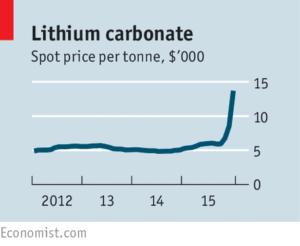Finally I’m getting some traction with my passive income! After all, that’s what this blog is all about. The total for March 2008 is $2, 667.18, and I’m ecstatic to have broken the $2,500 per month barrier. If I can sustain it at $2,500 per month, thats $30,000 per year. While I’m not living in luxury, it’s definitely a great safety net to have. This represents a 11.9% jump from February’s passive income and it has been growing at a steady clip for quite a while now. Hopefully, I shouldn’t have a problem maintaining it.
Here’s the breakdown:
- Online Income: $1645.30
- Savings Accounts: $133.10
- Real Estate Trust Deed: $0
- Direct Oil Drilling Investment: $270
- Dividends from Canroys: $517.71
- Other Dividends: $113.38
The adsense revenue dropped from last month. It looks like I was smart-priced. Every other day my revenue would drop to a third of the regular amount, despite getting more traffic. Very strange, but if it keeps up, I expect April’s adsense revenue to drop even lower. I’ve rearranged some of the ads and substituted Adsdaq to try and compensate for this loss of revenue. Adsdaq is similar to adsense except that you state your eCPM (cost per 1000 impressions) price. If they can find an advertiser at that price, they’ll display their ads, else they’ll display an alternative ad code, which in my case is adsense.
On the other hand, Linkworth has done really well on my sites. March’s income was almost double of February’s and I expect April’s income to be atleast $150 higher. I’m very happy with their service and I strongly endorse it. It took a while to start getting income, but it looks like a winner so far.
Text-Link-Ads is also doing moderately okay although its taking more time than Linkworth. Note that you’re not allowed to use both of them on the same site, so see which one works better for you. Between the two, my favorite is currently Linkworth.
Amazon affiliate income has started to pick up and hopefully it will continue as I learn more about affiliate marketing and try out different techniques to boost it.
Surprizingly, I found out that I had earned ~$60 from Domain Embarking, a site that helps you earn money from parked domains. I had a few sites that were parked with Sedo.com. In over 2 years, I make about 24 cents with Sedo, but with Domain Embarking, now I’m making some money atleast. To be fair, the $60 was earnings for the year till date, so it could have been only $20 for March. I’ll find out how it does in April to get a better idea. Regardless, its still a whole lot better than the $0.01 per month I was making with Sedo.
Prosper is still handing out $25 signup bonuses to new lenders. When lenders who sign up through my link and fund their account, I get $25 too. That’s how I made the $175 in referral fees. I also made around $30-$35 last month in prosper loans but since they usually issue a statement around the 5th of the month, i’ll exclude that income. I usually get around $180-200 every month from the loans, of which 70% is return of principle. Calculating it manually is just too tedious.
I also made around $1,000 from my other investments and dividends. Some of the stocks pay over 10% in annual dividends. Two of the oil investments are paying 15-18%. The third oil investment is currently barely producing, but that seems like it will improve over the next few months and boost that portion of my income too. Also, as the price of oil stays around $100 per barrel, the monthly payout (which is typically delayed by 3 months) will increase a little bit.
The Federal Reserve will probably continue to keep dropping interest rates so my savings interest will probably keep dropping. Luckily its a small portion of my income so the $6 drop from last month isn’t very significant.
While I made this income, I also had some expenses that I should disclose as well. I pay about $119.40 for annual hosting on Dream Host. It’s awesome and I strongly recommend it. They have one click install for wordpress, php forum software, mysql databases and other stuff. I’ve used GoDaddy in the past and I didn’t like their interface at all. Dream Host is a lot easier to use in my opinion. If you use coupon code “PassiveIncome” you’ll get $19.40 off the annual fee or you can use “Dividends” to get free domain registration. I also pay around $40 for domain registrations which I usually register with 1 and 1. At $6.99, they’re pretty cheap. On a monthly basis, these costs work out to less than $14.
I’ve also signed up with an automated article submission tool called Jetspinner that lets you create multiple unique versions of the same article for submission to article directories. This is a great method to created targeted backlinks to your site. Jetspinner is free but its sister product Jetsubmitter costs $17 per month and automates the account creation and article submission to 500+ directories.
I also spend between $300-500 a year on financial articles, books, magazines and newsletters which works out to about $20-40 per month. So in all, my expenses are about $60 on average per month.
Having a side income that sufficiently large to allow you to pay the rent and put food on the top is a great stress reliever. As you can see, I have multiple streams of diverse income. If one of them drops off (like maybe adsense), my passive income doesn’t just totally disappear.
I hope I’ve inspired all of you to try and boost your passive income or maybe add new sources to increase your current income streams. Let me know how you’re all doing.




![[Webstigma: san diego seo]](http://livingoffdividends.com/wp-content/uploads/2008/06/webstigma_seo_san_diego_orange-300x282.jpg)